While it is important to choose a good wine, it is also important to know its properties and, especially, to understand what its counter-labels tell us.
Today we want to explain something more what we can find in these counter-labels, what kind of information you should know to learn about the origin of any wine, and not only the type of grape, but information that can be important and to be taken into account.
1. Commercial name
The most important data. It is the first thing we look at and it is from this moment that we will call the product by its name.
Sometimes the commercial name or brand may be the same as that of the winery that produces it, but it may be the name that has occurred to the owner of the wine.
2. Denomination of Origin
The geographical indication. This denomination guarantees the quality and characteristics of the product. Each D.O.P regulates the requirements that each product must meet. In most cases, this indication usually comes as an external sticker to the label.
In our case, and as you know, we belong to the Jumilla Protected Designation of Origin, located in the Region of Murcia. On their labels, we will see, in addition to the logo and the name of the D.O.P., the number that identifies each bottle.
3. Vintage of the harvest
Every bottle indicates the year in which the vine was harvested, and can also provide information on the aging of the wine it contains. As well as its reservation time, which is usually through the time of keeping the bottle in the same cellar.
In this way, we can know if the wine we are going to consume is young, aging, reserve or large reserve, depending on the time spent in barrel, amphora (if applicable) and bottle, depending on the time of each D.O. to which one wine or another belongs.
4. Description of the wine
Many times, the back label contains a small description about the wine. It explains feelings that evoke the characteristics of the product, tasting notes, the grapes used, etc. Depending on the places where the wine will be marketed, this information will be in one or several languages.
5. Bottler
Here the details of the bottler or winery that produced the wine in question are detailed: name, location and registration number bottler.
6. Lot number
Each type of wine in each year has a different batch number. In this way, it is possible to identify the bottling year, as well as the lot to which a whole vintage belongs to the same wine.
7. Alcoholic graduation
Depending on the D.O, the alcoholic values of the wine will vary. In this case, the alcoholic volume information will come in a larger size than the rest of the information, because it is important information that the consumer should know.
8. Type of grape
The grape variety with which the wine has been made. It can be composed of different varieties through a Coupage, or be monovarietal (that is, made with a single type of grape).
Normally, wines are made with native varieties from each area. As is our case, especially the Monastrell and the Garnacha Tintorera.
9. Sulphites
Sulphites is one of the elements that, in many cases, is necessary for the good preservation of wine. And although these words can cause some misgivings, sulphites are an element that we ingest daily.
The European Community regulations say that any food or beverage that contains more than 10 mg / l, it must be indicated on the counter-label so Clear and understandable for most of the countries that are members of the European Community.
10. Origin
All products of Denomination of Origin produced in Spain must clearly and visibly indicate their origin. It is another of the regulations of the European Community to indicate the origin of any food product.
11. Quantity
Expressed in milliliters or centiliters, it informs us of the quantity of liquid in the bottle.
The standard quantity is 75cl, but there are many more sizes such as the Magnum bottles, 1.5l, the Jeroboam 3l., to the largest, the Nebuchadnezzar, 15l. capacity.

